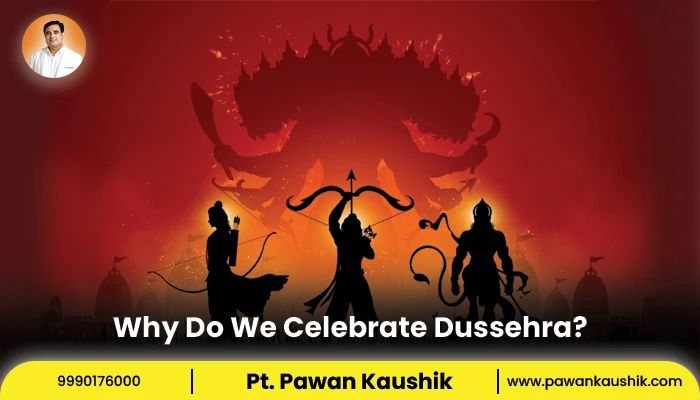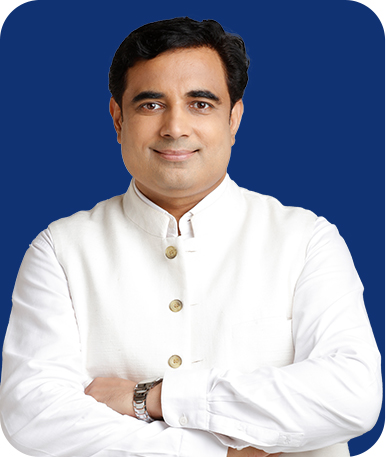
Why Do We Celebrate Dussehra Every Year?
Dussehra is celebrated to mark the victory of Lord Ram over Ravana. It is a festival of triumph over evil by righteousness, and it is a symbol of victory and truth. The festival is celebrated across the nation, marking the ancient mythological demise (killing) of Ravana by Lord Ram.Dussehra, also known as Vijayadashami, is celebrated on the Dashami Tithi, the tenth day of the bright phase of the Ashwin month in the Hindu lunar calendar. We celebrate Dussehra every year, and it is a major Hindu festival in India. This year, the grand festival will be observed on 2nd October 2025 (Thursday).
The main attraction of Dussehra is the Ravan Dahan ceremony, where Ravana’s effigy is burnt to show the victory of good over evil. Along with this, people enjoy the festival with fairs, cultural programs, and gatherings in many places. Let’s now understand in detail why Dussehra is celebrated and find out about Dussehra dates 2025.
When is Dussehra in 2025
Dussehra 2025 is set to be celebrated on 2nd October after the completion of the 9-day Navratri, which will conclude on 1st of October. Navratra 2025 is set to be celebrated from 22 September to October 1st. Here are the details of Dussehra 2025 dates.Dussehra Date– 2nd October 2025
Vijay Muhurat- 02:09 pm to 2:56 pm
Dashami Tithi Begins– 07:01 Pm on October 1, 2025.
Dashmi Tithi Ends- 7: 10 pm on October 2, 2025
Dussehra and The Tale of Lord Rama Defeating Ravana
Dussehra marks the mythological killing of Ravana by Lord Ram in the Ramayan. Lord Rama, an avatar of Vishnu, defeated the ten-headed demon king Ravana, who abducted the deity Sita. We celebrate Dussehra in memory of Lord Ram’s victory over Ravana.This victory teaches us that ego and arrogance (symbolized by Ravana) always fall before truth and righteousness (symbolized by Rama). Before Dussehra, Ram Leela is performed across India during Navratri. These performances show the story of Lord Rama defeating Ravana, celebrating the victory of good over evil.
Victory of Goddess Durga over Mahishasura
Another reason for the celebration of Dussehra is the killing of the demon Mahishasura by goddess Durga. It also represents the victory of divine force over evil energy (victory of gods over the demons).Dussehra symbolizes the destruction of negativity and the rise of divine energy. The festival teaches us that inner strength and purity always win against evil thoughts and actions.
Also check our thoughts on Dussehra 2025 – Date, History, Significance & Celebration Ideas

Spiritual Significance of Dussehra Festival
Dussehra is not just about mythology—it’s also a deeply spiritual event. It encourages self-reflection, inner cleansing, and spiritual victory.The burning of Ravana symbolizes letting go of our inner demons—anger, ego, greed, and jealousy. That’s why Dussehra is also called Vijayadashami, the day of victory over self and surroundings.
Dussehra Celebration in Different States of India
Dussehra is celebrated with different flavors across India:- North India: Ram Leela and Ravana Dahan
- Karnataka (Mysore): Royal Dussehra parade and rituals
- Maharashtra: Exchange of gold leaves as blessings
- Gujarat: Celebrated with Garba and folk songs
How Dussehra Connects to Navratri and Vijayadashami
Dussehra, also known as Vijayadashami, is observed on the 10th day of the Hindu month of Ashwin, right after the nine days of Navratri. During Navratri, people worship nine forms of Goddess Durga. Dussehra celebrates her final victory over Mahishasura.So, the festival brings together two divine stories—Rama’s and Durga’s—making it one of the most spiritually charged days in Hinduism.
Ravana Dahan: The Symbolic Burning of Ego
The burning of Ravana’s effigy is the most visual and impactful part of the Dussehra celebration. But it’s not just drama—it’s deep symbolism.Ravana Dahan reminds us to burn our own inner demons. Every head of Ravana represents a vice: ego, lust, greed, pride, jealousy, and more. By watching him burn, we are reminded to purify our own thoughts.
Why Dussehra Is Considered Auspicious for New Beginnings
Dussehra is considered a Shubh Muhurat (auspicious time) to start anything new. People buy vehicles, electronics, or even start new ventures on this day.This tradition is rooted in the belief that starting anything on Vijayadashami brings long-lasting success, as it aligns with divine energy.
Also check our thoughts on Diwali 2025: Date, Puja Muhurat, Significance, Rituals, Recipes & Celebration Guide

Conclusion:
Dussehra is a festival of victory of righteousness over evil forces. Like every year the grand festival will be celebrated with great joy and enthusiasm. People across India celebrate the Dussehra which commence after the competition of 9 days divine Navratri. Dussehra in 2025 will be observed on 2nd of October. Fairs are held across all cities in the country where the killing of Ravana is demonstrated by characters. Ram Leela is also staged in several parts of the country where characters plays the role of Lord Ram, Deity Sita and Demon Ravana.If you have any queries regarding the grand festival or want to confirm the subh muhurats for the festival, consult Pt. Pawan Kaushik for Your Dussehra Guidance
Pt. Pawan Kaushik, a renowned astrologer in India, offers spiritual and planetary guidance based on ancient Vedic science. If you’re seeking clarity in career, relationships, health, or spiritual growth—book your consultation today.
Book Your Consultation with Pt. Pawan Kaushik
Take the first step towards a better, divine-aligned future this Dussehra.
 +91 9990176000
+91 9990176000 +91 9999097600
+91 9999097600
 CALENDAR 2025
CALENDAR 2025











